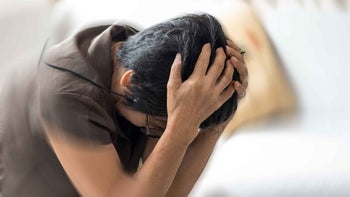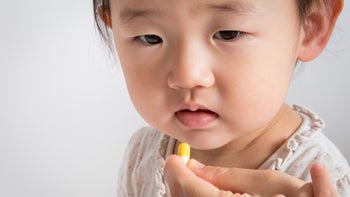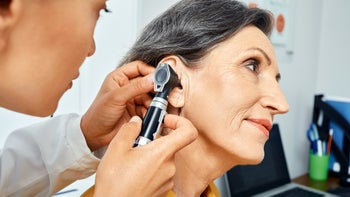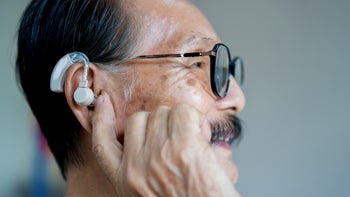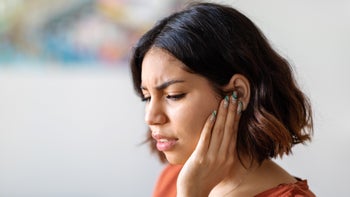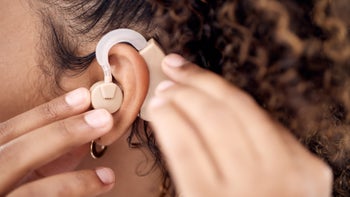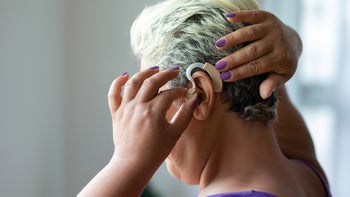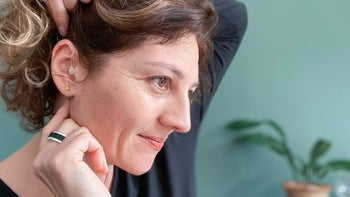
What Are the 6 Best Over-the-Counter Options for Earwax Removal?
Key takeaways:
Some people with hardened or excess earwax may need to use over-the-counter (OTC) earwax removal products, especially if earwax buildup is causing hearing loss.
Most earwax removal products work by softening earwax. Leave your earwax removal product in the ear for several minutes, then flush your ears out with warm water or saline for the best results.
Sometimes earwax removal requires the help of a healthcare provider. Let your provider know if you still have hearing loss or other ear problems after trying to remove earwax on your own.
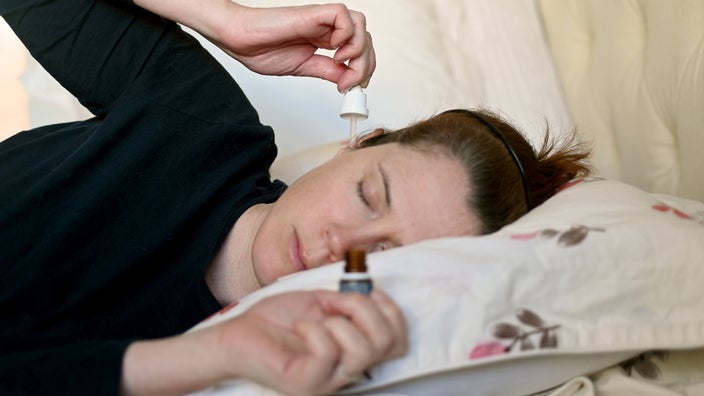
Your ears usually do a pretty good job of removing excess earwax on their own. Some earwax is necessary to help protect the ear canal and keep dust and bacteria from entering the ears. But, sometimes earwax can build up and cause problems.
Some people are more likely to have dry earwax, which can cause blockages (earwax impaction). If you have an earache, a feeling that your ear is blocked, or hearing loss, it may be due to hardened earwax. In fact, an earwax blockage is often the culprit when it comes to hearing loss.
It can be tricky to remove earwax. And some methods, like using a Q-tip, aren’t considered safe. You may be asking yourself if there are safe and effective ways to remove earwax over-the-counter (OTC). Keep reading to learn more.
Prescription Savings Are Just the Beginning
See what other savings you qualify for—from hearing aids to product samples.

Can you remove earwax with OTC products?
Yes, there are some OTC products that can help remove earwax. Some products include earwax removal drops and a bulb or syringe to help flush the ears with water after treatment. Each product may have different instructions for use. Be sure to read the label or ask your healthcare provider or pharmacist for help using your OTC earwax removal drops.
What OTC medications are available for earwax removal?
Most OTC earwax removal products contain the same medication and work the same way. However, there are multiple brand names, and each might have different inactive ingredients. The directions might differ slightly between brands. And some products include special tools to help remove earwax. Read on to find out some specifics about six common products.
1. Debrox
Debrox contains carbamide peroxide 6.5%. This medication causes foaming by releasing oxygen once inside the ear. This helps to loosen and soften earwax. Once the earwax is loosened, it should drain out of the ear on its own.
Some Debrox products include a rubber bulb syringe for flushing the ears with warm water after using the drops. This is an option if you don’t think all the wax was removed after using the ear drops.
To use Debrox, place 5 to 10 drops in the affected ear(s) twice daily for up to 4 days. Tilt your head sideways when applying the drops. Keep your head tilted or place cotton in your ear to keep the drops inside for several minutes. The foaming of the drops inside your ear might cause a crackling sound.
Debrox drops can be used in people ages 12 years and older. Ask your child’s healthcare provider before using these drops if they’re under 12 years old.
Read more like this
Explore these related articles, suggested for readers like you.
2. Murine
Murine also contains carbamide peroxide 6.5%. So it works the same way as Debrox to remove earwax. It also has the same instructions for use. And many Murine products include the ear bulb syringe for flushing the ear with water.
3. Clinere
Clinere contains carbamide peroxide 6.5%, as well. So it’s used similarly to the other carbamide peroxide products. This product includes an ear cleaning tool, which comes with special instructions. Be sure to read the instructions before attempting to use the tool, because placing objects inside the ear can be risky.
4. NeilMed ClearCanal
NeilMed ClearCanal is another carbamide peroxide 6.5% product, which works the same way as the previously mentioned earwax removal drops. This product comes as a kit with some additional tools to help remove earwax. The kit includes ear plugs, which can be used to keep the drops inside the ear during treatment. It also includes a can of saline spray for rinsing the ears.
The instructions for this product say to use 10 drops and leave them in the ears for 10 minutes. After that, rinse the ears with saline. According to the labeling, you can use it up to twice a week, unless your healthcare provider has instructed you otherwise.
5. NeilMed Kyrosol
NeilMed Kyrosol earwax removal kit is peroxide-free. Instead, it contains glycerin and sodium bicarbonate. Glycerin and sodium bicarbonate both work by softening the earwax.
In general, sodium bicarbonate earwax products can be used by filling the affected ear with 2 to 3 mL of drops, then flushing the ears out after 15 to 30 minutes. These products can be used for 3 to 14 days at home.
However, the specific instructions for use for NeilMed Kyrosol are to place 10 to 20 drops in the ears and leave them in place with cotton or ear plugs for 20 minutes. Then, flush the ears with lukewarm water. This medication can be used twice daily for 3 days, up to twice a month. It should only be used by people 13 years and older, unless otherwise instructed by a healthcare provider.
6. Hydrogen peroxide 3%
Hydrogen peroxide 3% is commonly used on the skin to clean cuts and scrapes. But it can also be used to remove earwax. It works in the same way as carbamide peroxide. It foams and bubbles, which loosens and softens the wax.
To use hydrogen peroxide 3%, fill the affected ear(s) and leave in place for 15 to 30 minutes. Then flush out the ears with lukewarm water to remove any remaining earwax. You can also use a mixture of half water and half hydrogen peroxide 3% to flush out the ears with a syringe.
Is one OTC earwax removal drop better than the others?
There isn’t one earwax removal drop that works better than others. As mentioned previously, a lot of OTC products contain the same ingredient. The product you choose might come down to a preference about which additional tools are included to help remove earwax.
When using hydrogen peroxide for earwax removal, it’s possible that it could cause some irritation of the skin inside your ear canal. So it may not be the best choice when it comes to earwax removal. If you have sensitive skin, you may want to go with the carbamide peroxide or peroxide-free options instead.
How can I get the most out of my earwax removal drops?
Regardless of which product you use, you should never let the tip of the dropper bottle or the bulb syringe enter the ear canal. This can allow bacteria to get into your ear, which can lead to ear infections. When using a bulb syringe, be sure you don’t let it block the flow of fluid coming out of the ear.
You’ll get the best results if you use the earwax removal drops a bit before you try to flush the ears. Use the drops as directed, and then wait 15 to 30 minutes before flushing out your ears. It’s best to use warm, but not hot, water or saline when flushing the ears. Using cold water can harden earwax and cause dizziness. The same goes for ear drops. You can warm the drops by holding the bottle in your hand for a few minutes before using them.
When should I see a healthcare provider for earwax removal?
Removing earwax at home may not be the safest for everyone. You shouldn’t attempt to remove an earwax blockage yourself if you have:
Drainage coming from your ear
Ear pain
A fever
Recently had ear surgery
A hole in your eardrum
Talk to your healthcare provider before trying OTC earwax removal drops if any of these situations applies to you.
If you’ve tried these OTC methods and still feel like your ears are blocked, you should see your healthcare provider. They’ll be able to look in your ear and see what’s causing the problem. They can also use techniques like irrigating the ear multiple times, suctioning wax out of the ear canal, or removing wax with a small tool designed for scraping and cleaning.
The bottom line
Removing excess earwax may be necessary for some people. There are several OTC products that can be used, including carbamide peroxide and hydrogen peroxide. These products work best if you flush the ears with warm water after using them. However, OTC earwax removal drops may not be safe if you have other ear conditions. Speak with your healthcare provider if you’re unsure if OTC earwax removal drops are right for you.
Why trust our experts?



References
Aaron, K., et al. (2018). Ear drops for the removal of earwax. Cochrane Database of Systematic Reviews.
Agency for Toxic Substances and Disease Registry. (2014). Medical management guidelines for hydrogen peroxide. Centers for Disease Control and Prevention.
A-S Medication Solutions. (2020). Murine earwax removal drops. DailyMed.
ENT Health. (2018). Earwax (cerumen impaction). American Academy of Otolaryngology–Head and Neck Surgery.
MedlinePlus. (2022). Earwax.
Michaduet, C., et al. (2018). Cerumen impaction: Diagnosis and management. American Family Physician.
NeilMed Pharmaceuticals. (n.d.). Kyrosol all-natural earwax removal kit.
NeilMed Pharmaceuticals. (2021). NeilMed clean canal earwax removal kit.
Proficient Rx. (2019). Debrox [package insert]. DailyMed.
PubChem. (2022). Carbamide peroxide. National Center for Biotechnology Information.
PubChem. (2022). Hydrogen peroxide. National Center for Biotechnology Information.
Quest Products. (2022). Clinere earwax remover. DailyMed.
Schumann, J., et al. (2021). Ear irrigation. StatPearls.
Sevy, J. O., et al. (2017). Cerumen impaction removal. StatPearls.









